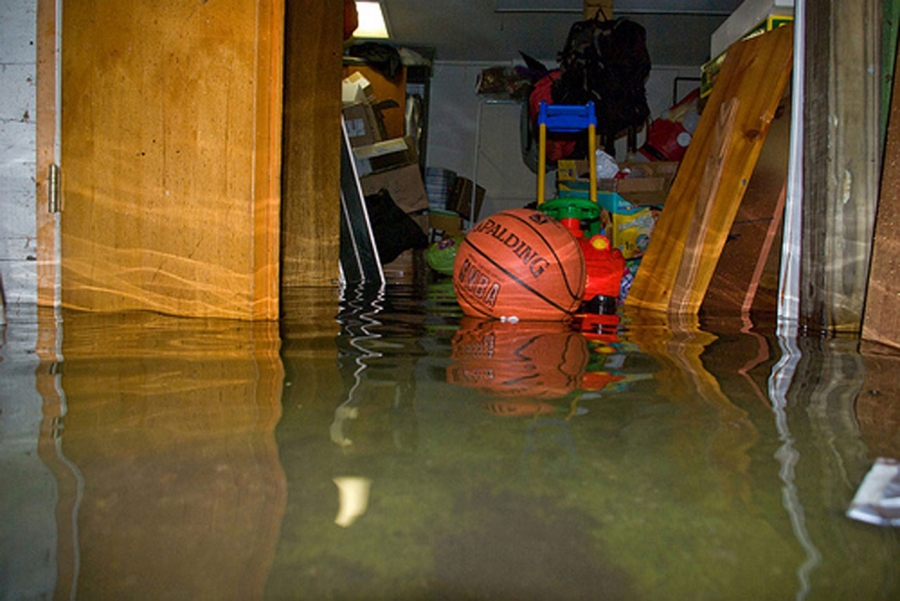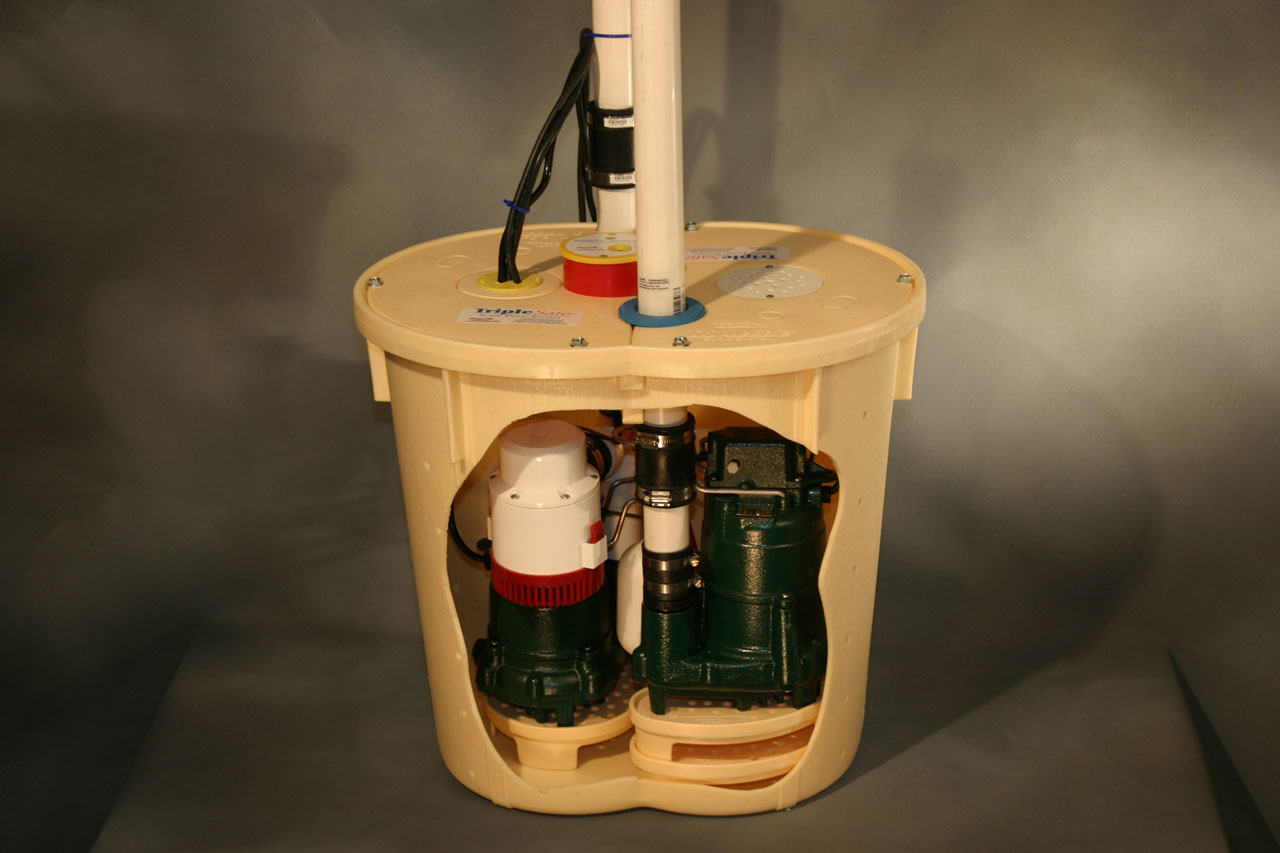Storm Readiness and Repair: Preparing for the Next Flood
Our simple guide to flood preparation tells you about flood insurance, emergency kits, ways to protect your family and property before a flood, and tips on evacuation.

With ocean levels rising and polar caps continuing to melt, the question is not if there will be another Hurricane Katrina, Irene, or Sandy, but when. We hope that new government policies will promote spending not only disaster relief, but on disaster aversion. In the meanwhile, those of us who live in flood-prone areas need to take preemptive measures to deal with the next disaster. The Federal Emergency Management Agency (FEMA) has good recommendations for how to prepare for the next flood.
First, learn about the flood risk for your neighborhood by using FEMA’s Flood Hazard Mapping tools and resources. Flood hazard maps show the flood risk for different communities and help to determine the flood insurance coverage you’ll need and its cost. (Homeowners’ insurance and condo policies will not cover property loss due to flooding.) If you live in an area marked with an “A,” you probably already know that the government mandates that federally regulated lenders require flood insurance to write a loan. If you live in a low-to-moderate risk flood zone or do not have a mortgage, flood insurance may still make sense. Go to the National Flood Insurance Program (NFIP) site to learn more and to find a flood insurance provider in your area.
In addition to flood insurance, consider a separate policy to cover the contents of your basement. Flood insurance only covers your home’s foundation and necessary mechanicals, such as the furnace, water heater, and electrical panel. It won’t cover washers, dryers, finished walls and floors, or stored personal items.
Build an emergency kit
Having basic supplies on hand, in one place, makes dealing with emergencies easier and less stressful. Store them in one or two plastic tubs with tight-fitting lids. FEMA’s contents list is appropriate for floods and a variety of other disaster situations. It includes the following items:
-
Water: one gallon of water per person per day for at least three days, for drinking and sanitation;
-
Food: at least a three-day supply of non-perishable food;
-
Battery-powered or hand-crank radio, a NOAA Weather Radio with tone alert, and extra batteries for both;
-
Flashlight and extra batteries;
-
First aid kit;
-
Whistle to signal for help;
-
Dust masks to help filter contaminated air;
-
Plastic sheeting and duct tape to build a temporary shelter;
-
Moist towelettes, garbage bags, and plastic ties for personal sanitation;
-
Wrench or pliers to turn off utilities;
-
Manual can opener for food;
-
Local maps; and
-
Cell phone with chargers, inverter, or solar charger.
For additional emergency kit recommendations, especially for families with special needs, go to Ready.gov. This site also has recommendations for a family communication plan, in case you and your loved ones are not together when a disaster strikes, including agreeing in advance on how you will get to a safe place, contact one another, and get back together. It will also spell out what everyone in the family will do in different situations.
Minimize Damage from Flooding
you have sufficient warning, you can minimize damage due to flooding. You’ll need to acquire several items and prepare before the flood, however.
Raise the appliances
If you expect water to enter your basement but have some time, you might move your furnace, water heater, and other appliances to higher ground. At the very least, you can remove their critical components. Preparing freezers, refrigerators, washers, and dryers to survive a flood is relatively easy. Close the water and gas valves, unplug the electrical line, and move these appliances to the garage or porch. You’ll need a good hand truck and a set of straps to secure the appliance to the truck.
Moving and disconnecting other appliances, such as the furnace or water heater, is more difficult. Consult with your serviceman about what’s feasible and the smartest, safest approach to moving HVAC equipment. Be forewarned: you will also need a variety of tools to disconnect appliances from gas, water, and electrical service lines. To move a water heater, for example, you’ll need a pump to drain it. You may need a pipe cutter or hacksaw to cut plumbing lines if your unit was not installed with threaded unions.
To really beat flooding, move appliances and electrical panels upstairs permanently. Homeowners with hydronic heating (i.e., radiant heating) systems can opt to move their boiler up a level. Space is not a big problem because these things are so compact – about the size of a large microwave. They may be used to heat water for domestic use as well as for space heating. Air handlers can be located in the attic. Washers and dryers can stack in a closet.
Install check valve
In addition to water damage, flooding may cause sewers to back up. With sewers filled, sewage may be pushed up drain lines into appliances that reside in the basement, including washing machines and utility sinks. Installing a check valve will help to prevent back up. They are relatively inexpensive and easy to install (see photo).
Install a sump pump
Although a sump pump probably won’t help to dispel water from a tidal surge, it may help with less severe flooding, such as after heavy rains when the water table rises above the basement floor. In addition, minor seepage may continue for some time after a flood. A sump pump can easily handle it and give you a jump on getting your basement back in order.

The best sump pump configuration for handling flooding due to storms is actually a combination of three pumps. Basement Systems dealers offer a prepackaged unit called the TripleSafe Sump Pump. Three pumps fit into a specially designed sump basin, which includes an air-tight cover. If the primary pump can’t keep up with inflow or if it fails, an AC-powered secondary pump kicks in. If the power goes out, a battery-powered back-up pump takes over. Two such pump packages were able to keep dry the basement of a couple in Atlantic Beach, New York, during Hurricane Sandy while surrounding basements were flooded. Click here to see the video.
Build a levee of sandbags
A levee may be constructed of sandbags and covered with poly sheeting to prevent seepage. Levee building is a big undertaking and levees require careful construction – the levee will probably fail if it’s built incorrectly. Constructing a levee may be feasible if you (and your friends) are fit enough to fill and lug several hundred bags and if the flood is not expected to reach too high or last too long (such as in the case of a tidal surge). Sandbags are inexpensive ($40 for 100 14” x 26” bags) and compact to store (when empty, of course!). Filling them doesn’t require sand – soil works fine. The base of the levee should be two to three times as wide as the height, and the bags should be laid with staggered joints, just as you would lay bricks. For excellent primers on levee building, see How to Build a Sandbag Dyke and Levee Building.
If you’re considering using a levee to protect your home from future flooding, consult with an engineer about where it should be built. Low elevations adjacent to your house, for example, should be protected first. With a plan in hand, you’ll know how many bags and how much soil you’ll need.
Before you evacuate
Preparing to evacuate before a flood is confusing and unsettling. Nevertheless, take the time to move as many items as possible out of your basement. At the very least, move family photo albums, books, and clothing to higher ground. Don’t leave tools behind, either. They’re expensive to replace! Don’t forget to move small appliances, such as wine chillers, dehumidifiers, and space heaters. Don’t be lulled into believing water won’t get any higher than it did last time there was a storm.
Look around your yard and secure any objects that can become airborne in high winds or that can float away. Floodwaters can lift and scatter the 6” x 6” timbers typically used to make raised garden beds. The high winds that often accompany flooding can toss around garden furniture, patio umbrellas, trellises, and fencing.
Finally, turn off gas and water supplies at the main valves before you head out the door. Turn off the main breaker at the breaker panel. Doing so will help to ensure your safety upon your return home.

Joe Provey
Joe is a freelance writer based in Bridgeport, Connecticut. He began his career as a carpenter before moving on to hold magazine editing positions at Popular Mechanics, House Beautiful, The Family Handyman, Fine Homebuilding, and elsewhere. Joe is the author of numerous books on home design and writes blogs for many home improvement and remodeling websites







